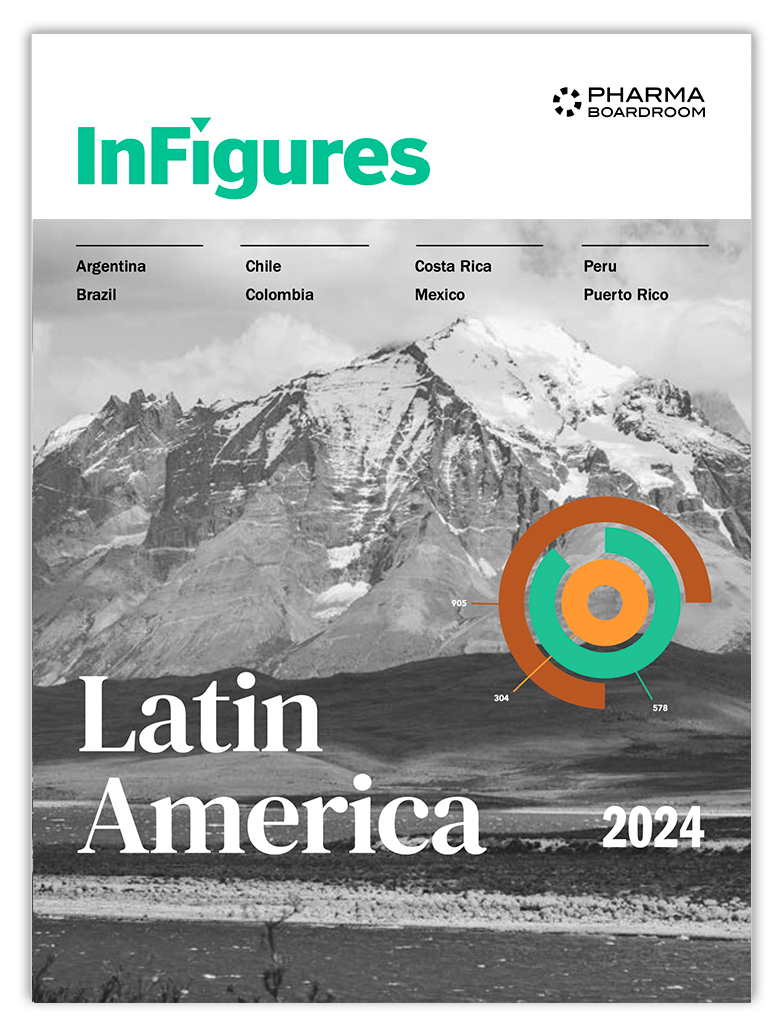David H. Crean, Managing Partner for Cardiff Advisory, highlights the tone and tenor of J.P. Morgan’s recent 2023 Healthcare Conference held in San Francisco in light of the uncertain economic environment that saw fewer IPOs in 2022 than in previous years and numerous negative enterprise value companies trading below cash positions. However, Crean remains optimistic regarding biopharma investment in 2023, foreseeing “a flight to quality” as lower-quality entities are weeded out by challenging headwinds, and only those with solid science and strong business models prevail.
The vision of the Golden Gate Bridge with a looming cloud cover summarizes this year’s annual JP Morgan Healthcare conference. While excited to get back to the business of making investments, networking with executives, and speed-dating business development opportunities, for many of the attendees there is a concerning climate of economic challenges in 2023. My walkaway tones for this year are anticipatory and subdued resignation. Endpoint’s Amber Tong and STAT’s Matthew Herper provided great summaries on the biotech pulse at JPM 2023 which confirm my considerations.
Although there was general enthusiasm in getting back together after a two-year hiatus for an in-person conference, many people noticed that attendance was down and some were feeling as gloomy as the Bay Area’s weather, with industry executives forecasting economic troubles in the year ahead. Over the past year, multiple biopharma companies have shut down, scaled back, or pivoted their plans and unfortunately laid off employees in the process. Many public companies were hit hard on share prices, fewer IPOs were completed in 2022 and there are numerous negative enterprise value companies trading below cash positions. The XBI index of biotech stocks finished 2022 down 27 percent, compared to a 20 percent decline in the S&P 500. Biotech funding in the fourth quarter of 2022 was down more than 50 percent compared to the prior year. Many companies and investors claim these challenging headwinds will help weed out lower-quality entities with a Darwinian survival of the fittest logic taking hold.
Despite these challenges, attendees still crammed into the Westin St. Francis and nearby hotels for Biotech Showcase, RESI, and other specialty conferences to listen to life sciences executives offer their latest pitches, positive news, expectations, and capital needs for 2023 and beyond. Personally, I am excited about the state of the industry despite the noted challenges in the market. One conference at the beginning of January should not dictate the sentiment and atmosphere for the entire year. The cloud cover and wet weather will eventually subside with clear sunny skies prevailing.
Investor Sentiment
The hot times of biopharma investing in 2020 and 2021 amid a global pandemic brought in a tidal wave of capital from generalist investors. With these generalists gone, knowledgeable specialist investors dominate the landscape
From an investor standpoint, there is a flight to quality. The science and innovation that underlies the research and development of new technologies continue their momentum at breakneck pace. Companies that come up with good clinical data are still getting rewarded. We are very much in an era where investors, in particular, just need to see that evidence. Two to three years ago, platform companies touting flashy technology could have brought in massive sums while they were still years away from the clinic.
The hot times of biopharma investing in 2020 and 2021 amid a global pandemic where makers of drugs and vaccines carried the hope of the world brought in a tidal wave of capital from generalist, tourist investors. With these generalists gone on to other pastures, knowledgeable specialist investors dominate the landscape in the investment ecosystem. Specialist investors ask tougher questions and are pickier about where they write checks. Venture capital and private equity investors are raising larger and larger funds and have significant dry powder to invest. The sentiment seems to be focusing on translating technology into real products.
One highly regarding specialist investor, Bob Nelsen, co-founder of ARCH Venture Partners, told Endpoints founding editor John Carroll in a fireside chat that his firm is investing “at the fastest pace on a dollar basis that we’ve ever invested, even now.”
Biopharma Companies looking for Growth and Innovation
Within hours of the conference, four biopharma life science companies had announced acquisitions worth roughly USD 4.5 billion in total, raising hopes that this could be a more active year for mergers and acquisitions (M&A). The individual deals were modest in size. Nonetheless, life science observers have been eager for any indication that things will pick up after 2022, when USD 40 billion out of USD 60 billion in total deal value came from just two transactions, Amgen buying Horizon and Pfizer acquiring Biohaven.
Optimism for M&A always runs high in January and appears to be a bellwether for industry forecasts. Big pharma and large-cap biotech companies are sitting on loads of cash on their balance sheet and almost all have varying needs for near- and long-term growth. Organic growth from internal R&D can only go so far, which means looking outside for inorganic growth via acquisitions — often from the ranks of small and mid-sized biotech. Hopefully, these M&A announcements made in early January suggest that 2023 could be different. Time will tell in determining the big morale boost some are looking for despite current headwinds.
Emerging Biopharma with a need for Capital or Partners
Emerging biopharmas are being encouraged to operate lean, make tough decisions and act swiftly
With the IPO window anticipated to remain shut, private capital fundraising becomes paramount, especially for those emerging companies that are either not seeking to or struggling to partner with biopharma companies. CEOs of many emerging companies state that capital financing, raising venture capital, launching an IPO, or selling additional stock to further fund R&D and other operations will be a challenge in 2023. Money worries for 2023 reflect the previous 12 months, in which just about every financial metric used to assess the health of the biotech sector showed signs of significant distress.
Emerging biopharmas are being encouraged to operate lean, make tough decisions and act swiftly, especially during periods of economic uncertainty like the one we are likely to face. Companies should rely on scenario planning and prepare a set of long-term moves that will help them thrive in a higher-for-longer environment, as well as look for capital through alternative channels.
Inflation Reduction Act
From an investor standpoint, there will be an impact on valuation and decisions made to pursue small molecule R&D versus biologics
One of the bigger concerns for the industry in late 2022 and now into 2023 has been the likely impact of the Inflation Reduction Act (IRA) on research and pipeline decisions (as price controls take effect in 2026). What I felt at the conference is that few people wanted to talk about the Inflation Reduction Act. I think we are all trying to get clarity on its impact and trying to figure it out. Most large pharma executives did not discuss the law, despite railing against it in earnings calls, 8-Ks and blaming any pipeline cuts on the new price provisions. All life sciences companies will need a strategy to deal with the impact of the IRA. From an investor standpoint, there will be an impact on valuation and decisions made to pursue small molecule R&D versus biologics. Many feel that investment in small molecule R&D will fall over time because nine years is not enough time to recoup the capital needed to launch these companies and develop drugs.
Final Thoughts
The challenge for 2023 will be identifying the right investments and quality companies with meaningful technologies and products, as well as aligning buyer and seller pricing expectations as valuation resets are forthcoming or already in motion
As attendees recover from the conference and are probably going through a stack of business cards, one question I continue to have is, why do we do this every year? The weather gurus rarely cast a helpful eye on San Francisco in January when healthcare stakeholders descend on Union Square for this annual conference. We do this every year because we love what we do and are trying to remain relevant and successful in this ecosystem. Healthcare has never been more important. The stakes are getting higher and the opportunities in front of us are huge.
Venture capital and private equity dry powder are still very plentiful, and the sell-side pipeline is strong. The challenge for 2023 will be identifying the right investments and quality companies with meaningful technologies and products, as well as aligning buyer and seller pricing expectations as valuation resets are forthcoming or already in motion. With the difficult capital markets, several strategies must be applied to ensure the continuity of business. Debt financing and alternative ways to access capital are becoming more popular. Some companies will simply disappear and this is probably okay.
Innovation and new advancements in technology are coming at us fast and furious, but that does not necessarily mean support systems and regulatory decisions guiding their use are keeping up. The changes have to do largely with the blurring of categories such as companion diagnostics, precision medicine, therapeutics, cell and gene therapies, AI/ML, and digital health.
Controlling costs and delivering better outcomes was discussed in many panel discussions. Specialty care is the area that accounts for a lion’s share of healthcare costs, but primary care is where many companies are focused. Be that providers, payers, or even retailers, having a strong primary care strategy is what people will continue to focus their value-based care efforts on.
Lastly, industry consolidation is expected. Not all of it will be pretty, there will be a lot of super-structured deals and low-value share swaps. Dealmaking will continue on its path of more tuck-in acquisitions rather than large companies doing major deals in search of synergies. Initial deals in the first few weeks of January suggest that we may see better M&A and partnering activities than in 2022.
—
Disclosure
David H. Crean, Ph.D., is Managing Partner for Cardiff Advisory LLC, an M&A investment banking strategic advisory firm focused on the Life Sciences and Healthcare sectors. This article is provided for informational purposes only and does not constitute an offer, invitation, or recommendation to buy, sell, subscribe for or issue any securities.
The principals of Cardiff Advisory LLC are registered representatives of BA Securities, LLC Member FINRA SIPC, located at Four Tower Bridge, 200 Barr Harbor Drive, Suite 400 W. Conshohocken, PA 19428. Cardiff Advisory LLC and BA Securities, LLC are unaffiliated entities. All investment banking services and securities are offered through BA Securities, LLC, Member FINRA SIPC.



